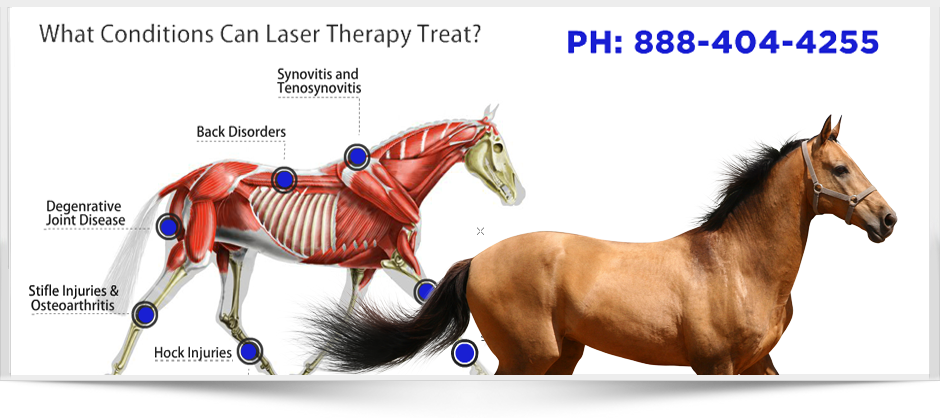Equine Therapy Success Stories: Real Individuals, Real Psychological Transformations
Wiki Article
Laser Treatment in Equine Therapy: A Modern Technique to Improving Horse Wellness
Laser treatment has actually arised as a pivotal method in equine therapy, making use of concentrated light energy to promote cellular fixing and expedite healing from a selection of ailments. By promoting mitochondrial task and enhancing ATP manufacturing, laser therapy not only enhances flow however additionally gives substantial pain relief.Recognizing Laser Treatment
Laser therapy, a non-invasive therapy technique, has gained substantial traction in equine medicine due to its efficiency in advertising healing and discomfort alleviation. Improved ATP levels quicken cells repair service processes and lower swelling, making laser therapy specifically efficient for treating bone and joint injuries, wounds, and various other inflammatory problems in equines.There are several sorts of lasers utilized in equine therapy, each with details wavelengths and power outcomes tailored to various restorative needs. Low-level laser treatment (LLLT), also recognized as cold laser treatment, utilizes lower power degrees to stimulate cell feature without triggering thermal damage. High-intensity laser treatment (HILT), on the other hand, uses higher power levels to attain deeper tissue infiltration and even more substantial therapeutic results.
Veterinarians use numerous laser gadgets and strategies depending upon the problem being dealt with and the desired deepness of cells infiltration. Proper training and competence are essential for making certain the safe and efficient application of laser treatment, thus optimizing its therapeutic possibility while reducing threats.
Benefits for Horse Wellness
With a strong understanding of just how laser therapy functions, it is essential to explore its various benefits for equine health and wellness. Among the primary advantages is its ability to increase tissue repair service and cell development. By boosting cellular function, laser therapy advertises faster injury recovery and help in the regrowth of broken cells. This can be specifically advantageous in minimizing recuperation times for horses struggling with injuries.
In addition, laser treatment has been revealed to improve circulation, thereby boosting blood circulation to affected locations. Improved flow ensures that essential nutrients and oxygen are supplied more effectively, promoting the healing process. In addition, laser therapy's anti-inflammatory results help in minimizing swelling and discomfort, which is important for the general well-being of the steed.
Pain monitoring is one more significant advantage. By releasing endorphins and obstructing discomfort signals, laser therapy supplies effective, non-invasive remedy for both acute and persistent pain. This can add to improved flexibility and lifestyle for the pet.
Finally, laser treatment is a non-invasive treatment choice, minimizing the danger of complications connected with even more invasive treatments. Its versatility and effectiveness make it a very useful device in modern equine vet medication.
Common Problems Treated

Another common problem treated with click for more info laser therapy is joint inflammation. Equines dealing with both intense and chronic arthritis gain from the anti-inflammatory impacts of laser therapy, which aids to alleviate pain and improve joint function. Furthermore, laser therapy is utilized in the monitoring of wounds. Whether managing surgical lacerations or terrible injuries, the modality promotes much faster tissue fixing and decreases the danger of infection.
Horse breathing conditions, such as recurrent respiratory tract obstruction (RAO), additionally respond favorably to laser treatment. The anti-inflammatory residential properties of the treatment help in reducing air passage inflammation, thus enhancing respiratory system feature. Additionally, laser treatment is helpful in treating unguis problems, including laminitis and abscesses. By boosting flow and decreasing pain, it sustains quicker recuperation.
Treatment and Safety
Executing laser treatment in equine therapy involves a precise treatment to make sure both efficacy and safety. Equine Therapy. The procedure begins with a thorough veterinary analysis to figure out the suitability of laser therapy for the equine's specific problem. Once deemed suitable, the therapy area is prepared by cleaning and, if required, clipping the hair to improve laser penetrationThe expert must select the proper sort of laser, normally a low-level laser (LLLT) or a high-power laser (HPL), depending upon the problem being dealt with. The laser tool is after that calibrated to the ideal wavelength, power, and duration settings. During the application, the specialist moves the laser over the targeted location in a methodical manner, ensuring regular and even exposure.
Safety and security methods visit this site right here are purely followed, including using protective eyeglasses for both the expert and the steed. Additionally, it is critical to keep an eye on the steed for any signs of discomfort or negative reactions throughout the procedure. Post-treatment, the steed is commonly given a duration of rest to allow the restorative impacts to show up.

Future of Equine Laser Therapy
As advancements in veterinary medication continue to unfold, the future of equine laser therapy holds significant promise. Arising technologies and much deeper scientific insights are established to refine and expand the applications of laser treatment for horses.Additionally, recurring research into the molecular and cellular devices of laser treatment will likely yield enhanced methods i was reading this tailored to specific conditions, improving efficiency and minimizing treatment times. Personalized therapy plans based upon hereditary and biochemical pens can come to be a fact, making sure that each equine receives one of the most suitable and reliable treatment.
Furthermore, regulative innovations and standardization of procedures will improve the trustworthiness and integrity of laser treatment in equine practice. Equine Therapy. As these innovations remain to arise, equine laser treatment is positioned to become a vital element of vet treatment, offering boosted healing and enhanced high quality of life for equines around the world
Final Thought

Report this wiki page